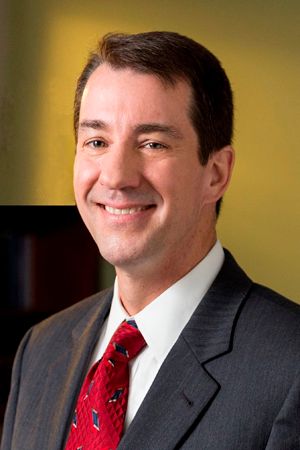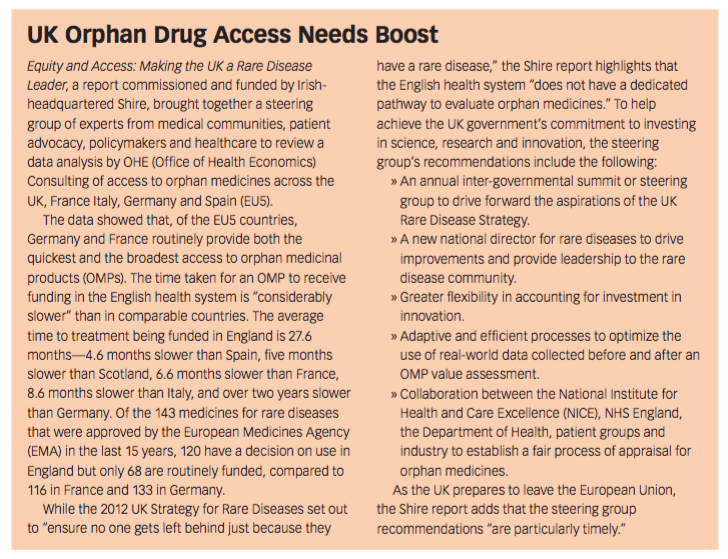Advancing Rare Disease R&D: A Mission Update
Pharmaceutical Executiv
Six years in, Pharm Exec looks at the progress of the International Rare Diseases Research Consortium-an ambitious global effort focused on accelerating orphan disease diagnosis, and ultimately enabling better treatment options for these underserved patient populations.
The International Rare Diseases Research Consortium (IRDiRC) was launched in 2011 to facilitate cooperation and collaboration on a global scale among the many stakeholders active in rare diseases research, and to maximize the output of rare diseases R&D efforts around the world. Pharm Exec spoke to Dr. Christopher Austin, chair of the IRDiRC Consortium Assembly-who also serves as director of the National Center for Advancing Translational Sciences (NCATS) at the National Institutes of Health (NIH)-about what IRDiRC is doing to realize its ambitious goals: to deliver 200 new therapies for rare diseases and the means to diagnose most rare diseases by 2020.
PE: Can you outline the work IRDiRC is doing in order to realize its goals?
AUSTIN: To guide its work, IRDiRC developed a set of policies and guidelines, which are the principles that IRDiRC members agree to follow, focused on the following areas: data sharing and standards, ontologies, diagnostics, biomarkers, patient registries, biobanks, natural history, therapeutics, models, publication and intellectual property, and communications about the Consortium. Coordination of efforts that address common roadblocks is key to maximizing the collective impact of global investments in rare diseases research and accelerating progress. To that end, barriers and gaps in rare diseases research were identified, and task forces were set up to address some of these
Christopher Austin

gaps through policy recommendation and/or technical solutions; the work has been guided by three scientific committees-diagnostics, interdisciplinary, and therapies-and three constituent committees-funders, companies, and patient advocacy-which also play important advisory role on the Consortium Assembly.
PE: As we move closer to 2020, are the IRDiRC’s two main objectives, to deliver 200 new therapies for rare diseases and the means to diagnose most rare diseases by that time, still realistic?
Austin: Last year, the goal to deliver 200 new therapies was achieved, four years earlier than expected. The goal to deliver the means to diagnose most rare diseases has made significant strides, with over 3,600 tests available for the diagnosis of rare genetic diseases, compared to 2,200 in 2010. Overall, it is estimated that diagnostic possibilities increased from 10% to 30-50% in the last five years. Efforts are ongoing to deliver more diagnostic tests. In light of these successes, IRDiRC is currently setting new goals for the next decade that are expected to be even more ambitious, and will contribute to further diagnostic and therapeutic progress.
PE: What kind of success has IRDiRC had since its establishment six years ago?
AUSTIN: IRDiRC has brought forth awareness to the importance of principles laid out in its policies and guidelines, and promotes the adherence of these principles in research projects funded by its members. The Therapies Scientific Committee further developed recommendations to guide policies and funding strategies so as to reach its goal of 200 new therapies by 2020, based on the IRDiRC Polices and Guidelines.
IRDiRC task forces have produced guidelines and recommendations for policy change in specific areas, including the guidelines for data mining and repurposing, patient-centered outcome measures, and small population clinical trials. IRDiRC also worked on developing standards for interoperability among databases for human phenotypes.
In collaboration with the Global Alliance for Genomics and Health, three task forces were set up, working on rare diseases gene discovery through a federated network of

genotype and rare phenotype databases called Matchmaker Exchange, tackling the barrier of data sharing through interpretation of consent and condition of data use through Automatable Discovery and Access Matrix, and setting out the development of ethical, legal, and technical requirements of privacy-preserving participant identifiers in rare diseases research.
Additional task forces are due to commence shortly to address approaches for investigating unsolved diagnostic cases in non-coding genomic regions, bottlenecks and barriers to clinical data sharing, and best practices for patient engagement in rare disease research.
IRDiRC also created a quality label, “IRDiRC Recognized Resources,” to highlight standards, guidelines, tools and platforms which, if more broadly used, would contribute toward IRDiRC goals-and encourage the research community to adopt interoperable data standards while promoting data sharing.
PE: Have you seen any advance in combating the lengthy diagnosis time associated with rare diseases?
AUSTIN: According to patient surveys conducted in Western Australia, Canada, and Europe, the average time of diagnosis for a rare disease is five to six years. It is thought that this time will be decreased to two to three years if a patient has access to new diagnostics methods such as next-generation sequencing, but this has yet to be confirmed by systematic surveys. IRDiRC is planning to collect data on this, as decreasing diagnosis time for rare diseases is integral to progress and the aim is to enable all patients living with a rare disease to receive diagnosis within one year of coming to medical attention.
PE: Can you outline what involvement IRDiRC has with the pharma/biotech community and how you work together?
AUSTIN: A dozen or so companies that meet membership criteria-investment of at least 10 million US dollars over five years on rare diseases research-are IRDiRC members, and participate in the Companies Constituent Committee to identify common roadblocks to efficient execution of research in the industry space that IRDiRC should address.
They also nominate experts to task forces who share their experience and knowledge, and, unsurprisingly, in the spirit of collaborative work, some members have also teamed up in their research and development efforts.
PE: We recently had Rare Disease Day. How has the evolution of this event advanced the thinking around issues of rare disease?
AUSTIN: Worldwide Rare Disease Day events have helped create more awareness of and support for research collaborations that are bringing hope to patients. For more information, contact Rare Diseases Europe-EURORDIS, the US National Organization of Rare Diseases (NORD), and the US National Institutes of Health, National Center for Advancing Translational Sciences.

Julian Upton is Pharm Exec’s European and Online Editor. He can be reached at julian.upton@ubm.com

Addressing Disparities in Psoriasis Trials: Takeda's Strategies for Inclusivity in Clinical Research
April 14th 2025LaShell Robinson, Head of Global Feasibility and Trial Equity at Takeda, speaks about the company's strategies to engage patients in underrepresented populations in its phase III psoriasis trials.
Key Findings of the NIAGARA and HIMALAYA Trials
November 8th 2024In this episode of the Pharmaceutical Executive podcast, Shubh Goel, head of immuno-oncology, gastrointestinal tumors, US oncology business unit, AstraZeneca, discusses the findings of the NIAGARA trial in bladder cancer and the significance of the five-year overall survival data from the HIMALAYA trial, particularly the long-term efficacy of the STRIDE regimen for unresectable liver cancer.
Expanding Immune Response Testing to Support Vaccine Development
April 22nd 2025Nigel McCracken, chief operating officer, Virax Biolabs, discusses the expansion of its ViraxImmune platform into areas such as transplant monitoring, vaccine efficacy, latent virus reactivation, and CAR T cell therapy.